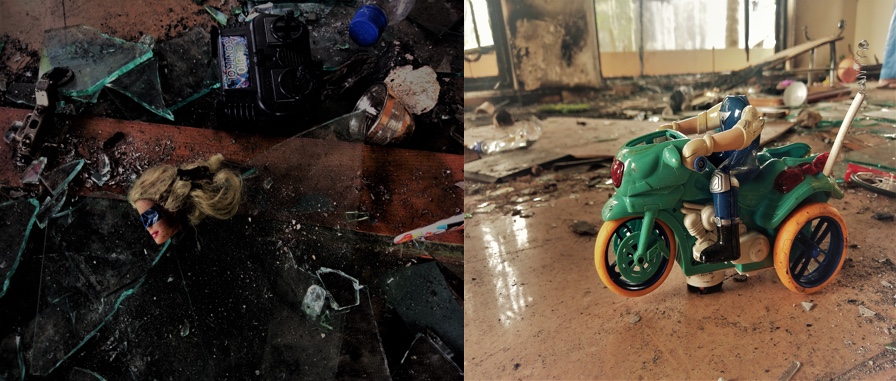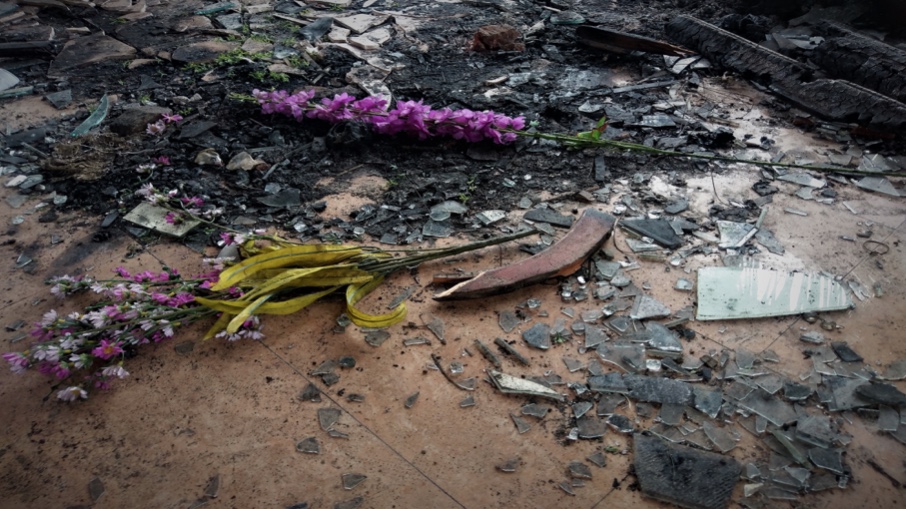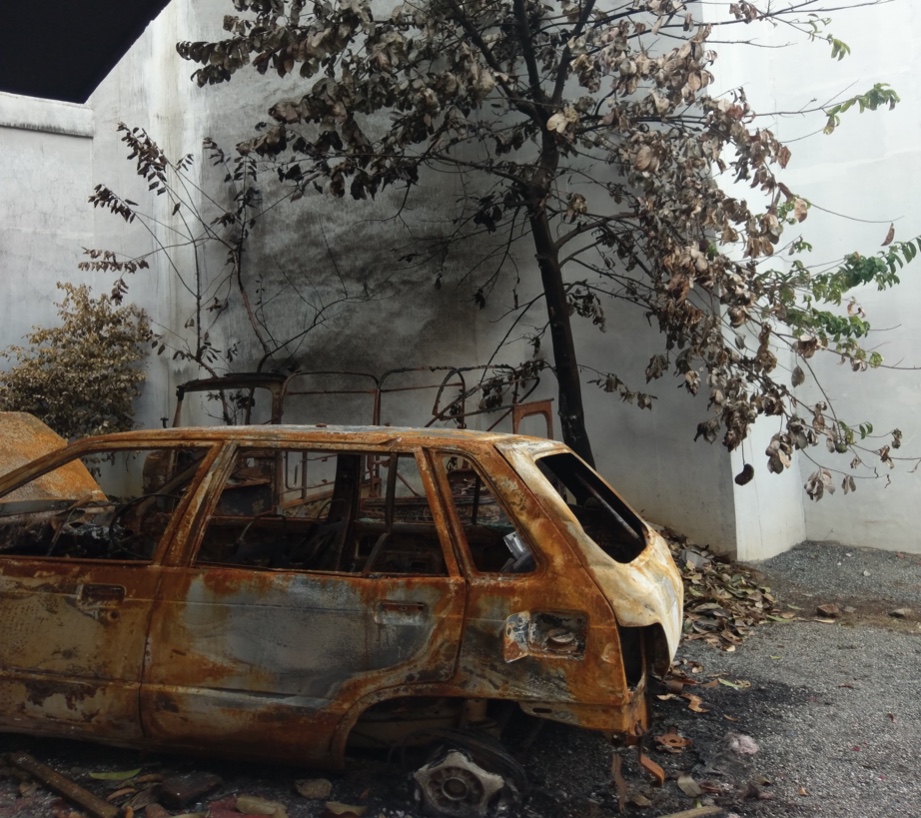A Brief Colonial History Of Ceylon(SriLanka)
Sri Lanka: One Island Two Nations
A Brief Colonial History Of Ceylon(SriLanka)
Sri Lanka: One Island Two Nations
(Full Story)
Search This Blog
Back to 500BC.
==========================
Thiranjala Weerasinghe sj.- One Island Two Nations
?????????????????????????????????????????????????Wednesday, March 21, 2018
Anti-Muslim Violence: Through The Scorched Frames

By Afrah Niwas –MARCH 20, 2018
An
attempt to flesh out and give voice to the numbers and figures we have
at hand of the recent anti-Muslim violence unleashed in the Hill
Capital; through a collection of narratives and images of the affected
Welekade area of Kandy district.
I
walked into a pocket of Muslim houses in a village in the district of
Kandy with a tiny voice in my head seeking for splinters of something to
hold on to as hope; amid the burnt homes and livelihoods. It seemed
almost unnatural and unforgivable that I had sought so. For what I
encountered, beyond the scenes of destruction, was a bitter cry far more
critical and sad. It was evident we have, as a community and as a
country, passed the threshold to yet another mayhem of misery and
impending bloodbath – if matters are left unchecked. It felt as if a
finite period of “state of emergency” had dawned among the Muslims and
the other communities in this country, who wish to live in peace.

“After burning the vehicle parked in the front, they burnt the small
children’s bicycle. They even broke the children’s toys…what kind of
beings were they?” A resident of the affected area wondered in dismay.
“Only
our clothes are different, everything else is the same….,” the first
woman I spoke to from the affected area began the conversation thus. The
Temple and the Mosque lay within a 100 odd meters’ distance on either
side of the main road. My first instinct as we entered the area was to
think like the many reports I read online, perhaps this community too
had worked together to prevent the violence. However, when we had spoken
to some of the residents it became clear that the attacks on this
community was very much unexpected. It happened on the morning of 7th of March, almost two days after the initial attacks in the Teldeniya and Digana areas.
The elderly woman I first spoke to continued to provide her own account
of the attacks. She also stated that a Sinhala woman took so many of
these women into her house and sheltered them during the attacks.
However it was sad to see that a shadow had fallen on the state of
‘normalcy’ that these communities experienced and their relations with
each other. “There were no issues between us previous to this. But
nobody came to us to at least to say a word of consolation. We are yet
to meet them face to face. I do not know what they will say now. But
before, whenever we see each other we speak referring to one another
“akka”.” , her voice trailed on with hurt and acknowledgement of the
more than physical damage this violence has brought on.
A
recurring image in my thoughts are the words and the sight of a small
school boy whose house was completely brought down by the arson attacks.
When they had heard the on-coming mobs, he said he fled the house with
his elder sister and their younger brother; their mother had passed away
some time ago and their father was at the hospital undergoing a major
surgery at the time of the attacks. Standing on the wreckage, fighting
the brimming tears while trying to be the ‘man’ of what
was now the skeleton of a house; he related using the past form “Dhatha
da kalyaanatha next month wechirunthom – we had planned to have our
elder sister’s wedding next month”. It took me some effort to descend
those broken steps and leave him alone there; in the backdrop of his
devastated house.



